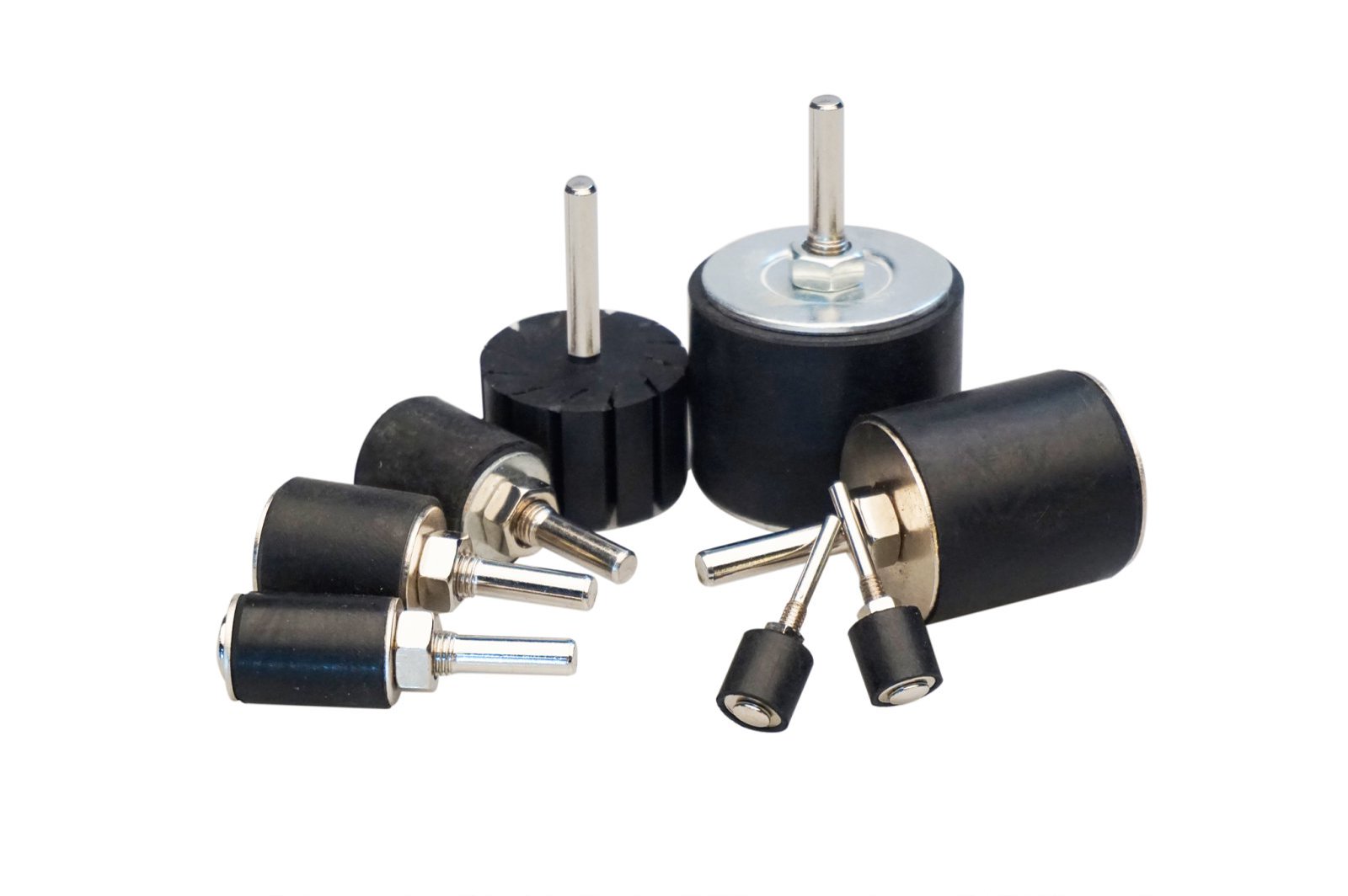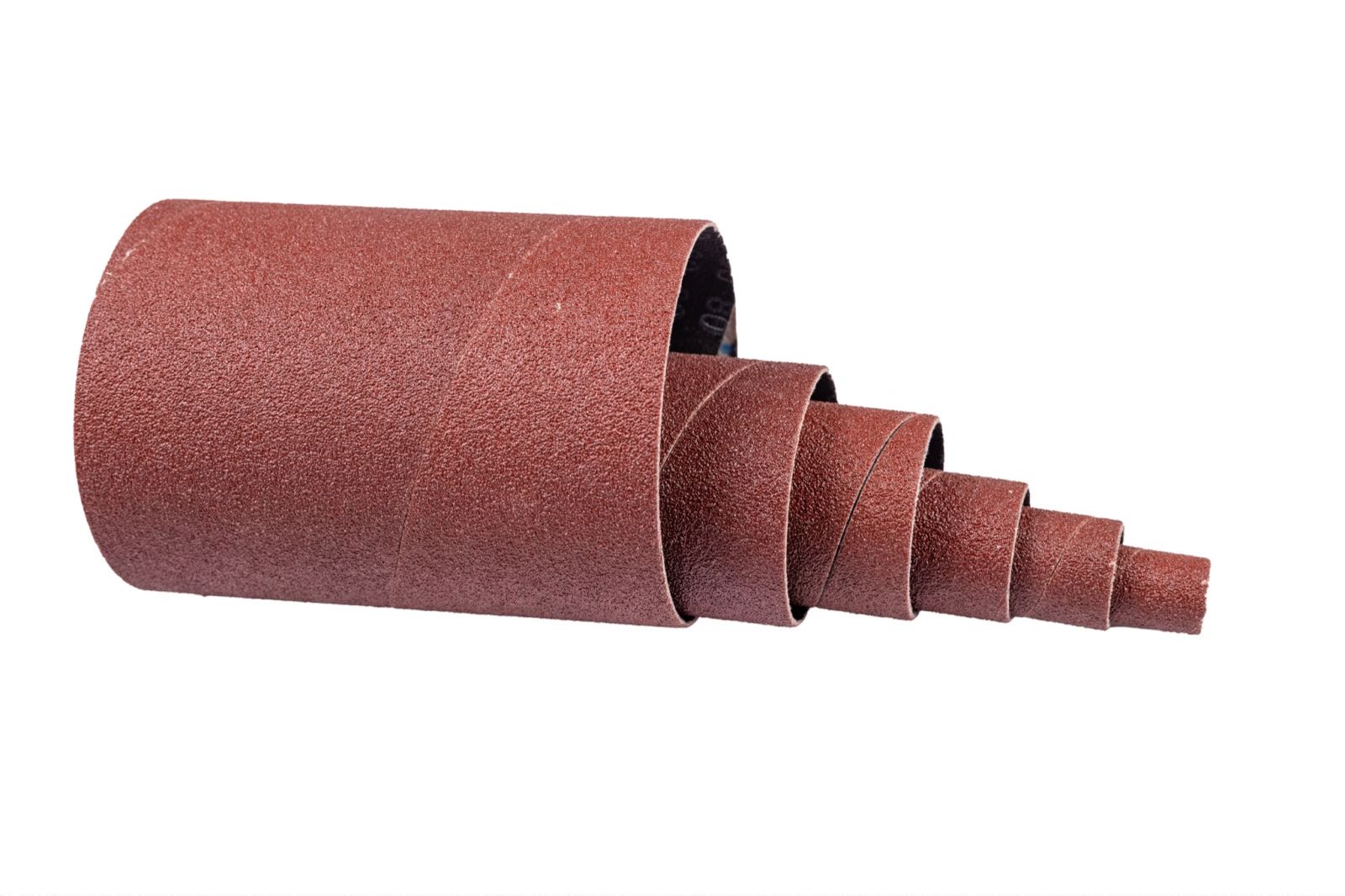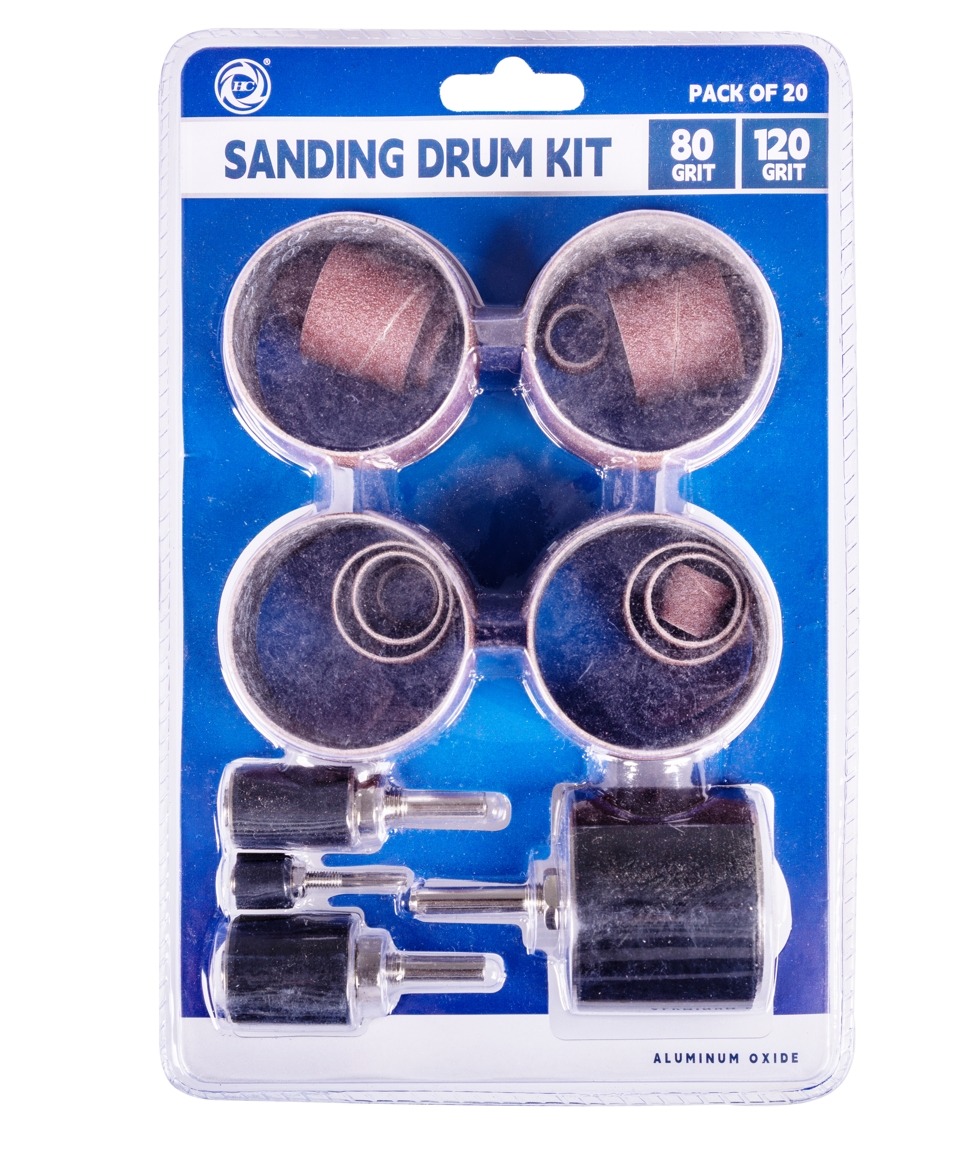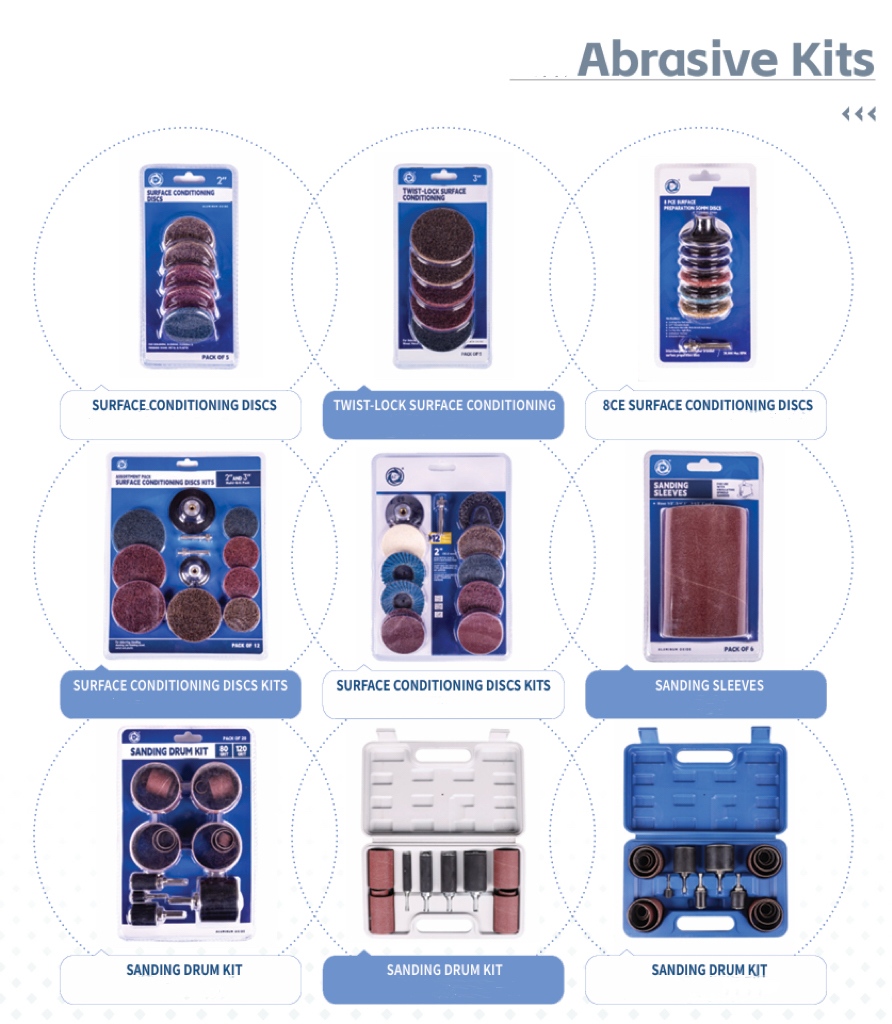Hot Sale Premium SANDING DRUM KIT
The Hot Sale Premium SANDING DRUM KIT is designed as a high-efficiency grinding and polishing set targeted at professionals and hobbyists. This 16-piece kit contains sanding sleeves in two grits, 80# and 120#, and four sizes of drums—1/2″, 3/4″, 1″, and 2″—to cover different needs for sanding, deburring, or finishing work. It gives great accuracy when used for metal surface treatment, wood polishing, or plastic trimming, and maintains its quality performance over an extensive range of applications.
Made for ease and strength, the kit works with most spin tools and drills, letting you attach and swap parts fast. Its quick-change setup greatly cuts down on time lost to abrasive delay, boosting workflow in both factory and shop settings.
Core Functionality and Advantages
A sanding drum is a cylindrical abrasive element extensively applied in cutting, molding, curving, or edging surfaces. The abrasive sleeve mounts over the drum, and it runs at high speeds to remove material by friction that can be controlled very easily. This operation makes surface treatment better than other methods and gives a uniform finish.
Key advantages of the Premium Sanding Drum Kit include:
-
Quick and efficient surface processing: Ideal for rust removal, paint stripping, and deburring of metal and wood components.
-
Adaptability: The cylindrical design allows smooth operation on flat, curved, and irregular surfaces.
-
Precision control: The combination of 80# (coarse) and 120# (fine) grits ensures step-by-step finishing from rough sanding to fine polishing.
-
Ease of use: The simple drum-and-sleeve structure allows fast sleeve replacement without the need for additional tools.
-
Durability: High-quality abrasives and strong bonding agents minimize wear and maintain performance over extended use.

Material Composition and Technical Features
1. Abrasive Materials
The abrasive layer is the heart of the sanding drum, determining its cutting performance and lifespan. This kit features a combination of brown fused alumina, white fused alumina, and silicon carbide, each selected for specific grinding characteristics:
-
Brown Fused Alumina (BFA): Known for its exceptional hardness and toughness, BFA is ideal for grinding and deburring ferrous metals. With a Mohs hardness of up to 9.0, it ensures rapid material removal and consistent surface results.
-
White Fused Alumina (WFA): High-purity white alumina provides finer, more controlled abrasiveness, making it suitable for polishing and finishing applications where a superior surface quality is required.
-
Silicon Carbide (SiC): Featuring extreme hardness and wear resistance, silicon carbide abrasives are particularly effective for non-metallic materials such as ceramics, plastics, and stone.
2. Bonding Agents
The abrasive grains are securely bonded to the substrate using resin-based adhesives, ensuring strong adhesion, flexibility, and impact resistance. Resin bonds also help to dissipate heat during grinding, preventing the workpiece from overheating or burning. In some cases, ceramic or rubber bonds may be employed to enhance cutting efficiency and surface smoothness.
3. Substrate Materials
The substrate of the sanding sleeve provides essential structural support. Common substrate types include:
-
Paper-based: Lightweight and cost-effective, ideal for light sanding and fine finishing.
-
Cloth-based: Offers excellent toughness and tensile strength, suitable for medium to heavy grinding.
-
Fiber-based: Combines flexibility with resilience, allowing the abrasive to conform to complex contours and grooves.
Structural Design: Broussonetia Papyrifera Configuration
The sanding drum approaches a Broussonetia papyrifera-type cylindrical structure. Abrasives lie across the face of the drum so that contact pressure remains consistent and results in stable grinding during high-speed rotation. The abrasive layer creates a strong grinding interface, removing material efficiently yet maintaining balance and precision.
The drum comes with safe attaching parts. You can easily put it on drills, sanders, or rotary tools. The round shape helps when working with curves and small spots. It is very good for inside edges, lines, and slots where old-type flat sanders do not reach.

Performance and Applications
The Hot Sale Premium Sanding Drum Kit demonstrates outstanding versatility across multiple industries:
-
Metal Processing: Efficiently removes rust, burrs, and welding marks, providing clean and smooth surfaces for further treatment or coating.
-
Woodworking: Ideal for shaping edges, smoothing joints, and preparing surfaces before varnishing or painting.
-
Plastic and Resin Products: Removes flashing and imperfections without melting or deformation.
-
Automotive and Repair Work: Used for surface preparation, spot repair, and refinishing of intricate parts.
-
DIY and Home Use: Suitable for craft projects, model making, and furniture maintenance.
The combination of different grit levels allows users to perform a complete surface treatment workflow — from rough sanding to detailed polishing — using a single, compact kit.

Technical Specifications
| Item | Description |
|---|---|
| Product Name | Hot Sale Premium Sanding Drum Kit |
| Total Pieces | 16pcs |
| Sanding Sleeves | 80# (coarse) & 120# (fine) |
| Drum Sizes | 1/2″, 3/4″, 1″, 2″ (each 1pc) |
| Compatible Tools | Electric drills, rotary tools, and die grinders |
| Materials | Brown fused alumina, white fused alumina, and silicon carbide |
| Bond Type | Resin/adhesive bond |
| Substrate | Paper, cloth, or fiber base |
| Application | Metal, wood, plastic, ceramics, stone |
| Feature | Quick-change design, high efficiency, long service life |
Why Choose Our Sanding Drum Kit
-
High Material Quality: Premium abrasives ensure consistent cutting strength and extended wear resistance.
-
User Convenience: Simple sleeve replacement reduces downtime and boosts productivity.
-
Comprehensive Compatibility: Works seamlessly with standard rotary and drill tools.
-
Multi-purpose Utility: Covers diverse sanding and polishing needs in industrial, commercial, and personal settings.
-
Reliable Performance: Stable structure minimizes vibration and ensures uniform results even during prolonged operation.
The Hot Sale Premium SANDING DRUM KIT stands out as a practical, durable, and versatile abrasive solution engineered for precision work. Its optimized material selection, robust bonding, and scientifically designed cylindrical structure deliver exceptional grinding performance for a broad range of applications. Whether in industrial production, furniture manufacturing, or professional repair work, this kit ensures high-quality finishes, reduced processing time, and maximum efficiency — making it an indispensable tool in any modern workshop.









